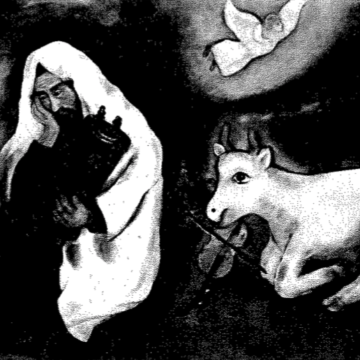William III took one look at Burghley House (the Elizabethan residence of the Cecil family) and declared it “too great for a subject.” Four hundred years old in the democratic year of 1986, Burghley is exposing some of it s treasures to the prying eyes of ordinary Americans. The Burghley Porcelains went on view at New...
Author: Shehbaz Safrani (Shehbaz Safrani)
Pleasures of Paestum
One way to learn patience is to travel by train from Naples to Palermo. The train is excruciatingly slow, and the traveler seldom has a soul to complain to, but the journey is ideal for basking in the picturesque countryside. It was here that Caravaggio, fleeing the Roman carabinieri after assaulting a man, sought refuge,...
Karl Bodmer’s America
To see America through the paintings of Karl Bodmer (1809-93) is a rare experience. Last summer and fall, thousands of Americans shared in this experience by visiting an exhibition of Bodmer’s works at the Metropolitan Museum of Art in New York City. The exhibition, commemorating the 150th anniversary of the 1832-34 North American expedition of...
Jeweler to Royalty
A million dollars for an egg? But of course, not all eggs come from chickens. Malcolm Forbes recently paid $1 million for an “egg” by Faberge at a sale of Russian art at Sotheby’s in New York City. The cliche has it that diamonds are a girl’s best friend, but why then are the jewels...
William Morris in Tokyo
Mingei: Japanese Folk Art, an exhibition consisting of 115 paintings, sculptures, ceramics, furniture, lacquers, toys, and other artifacts, opened at the Brooklyn Museum on July 12 and remained on display through September 30, 1985. Most of the art of Japan is imbued with simplicity, directness, and a tremendous sense of design. Japanese work in the...
The Grandeur of the Getty
In its setting, landscaping, architecture, and art collection, the J. Paul Getty Museum is unique in America. Outside and inside, the museum is designed to delight and stimulate visitors, especially those devoted to art, aesthetics, archaeology, and history. Nowhere at the Getty is there a trace of eccentricity. Of course, the Getty epitomizes the power...
The Man Who Loved Birds
“I drew, I looked upon nature only; my days were happy beyond human conception.” John James Audubon, who wrote these words, was born 200 years ago in Les Cayes, Haiti. To this day, he remains unrivaled as the greatest painter of birds, with the possible exception of Edward Lear (1812-1888). Unlike Audubon, though, Lear painted...
The Celebration of Chagall
Whimsy—clumsy or fantastic—fills the minds of those viewing the art of Marc Chagall. Two hundred oil paintings, gouaches, etchings, stained glass, and theater designs, chosen for their quality and their significance in the artist’s career, drawn from public and private collections throughout the world (including generous loans from the artist’s family), were on display at...
The Sumptuous Basket
In New York City there is a room for wonder. Each year, for the past decade and more, the exhibitions held in this small room have left viewers in awe. The extraordinary quality of these shows devoted to the art of China makes a visit to China Institute worthwhile at any time of the year,...
Art
ART George Stubbs: More Than Horses This spring, the Yale Center for British Art in New Haven, Connecticut, displayed the first comprehensive survey in the United States of the work of George Stubbs. A self-taught painter, Stubbs (1724-1806) devoted his life to painting animals with consummate skill and remarkable virtuosity. He suffered financial...
Television
Events in India of nearly 40 years ago are in the news all at once. The television series, The Jewel in the Crown, has touched the public’s nerve—not necessarily the raw nerve. The reaction has been so strong that the chemistry of success deserves close scrutiny. The exploitation of India’s resources is an old story....
Art: Balthus
Balthus: A Retrospective, an exhibition representing a half century (1930-1980) of the contemporary French artist Balthus (Balthazar Klossowski of Rola), closed in May at New York’s Metropolitan Museum of Art. It consisted of some 50 paintings and 60 drawings. Included in the show were illustrations for Emily Brontë’s Wuthering Heights (1933), in which Balthus identified...


